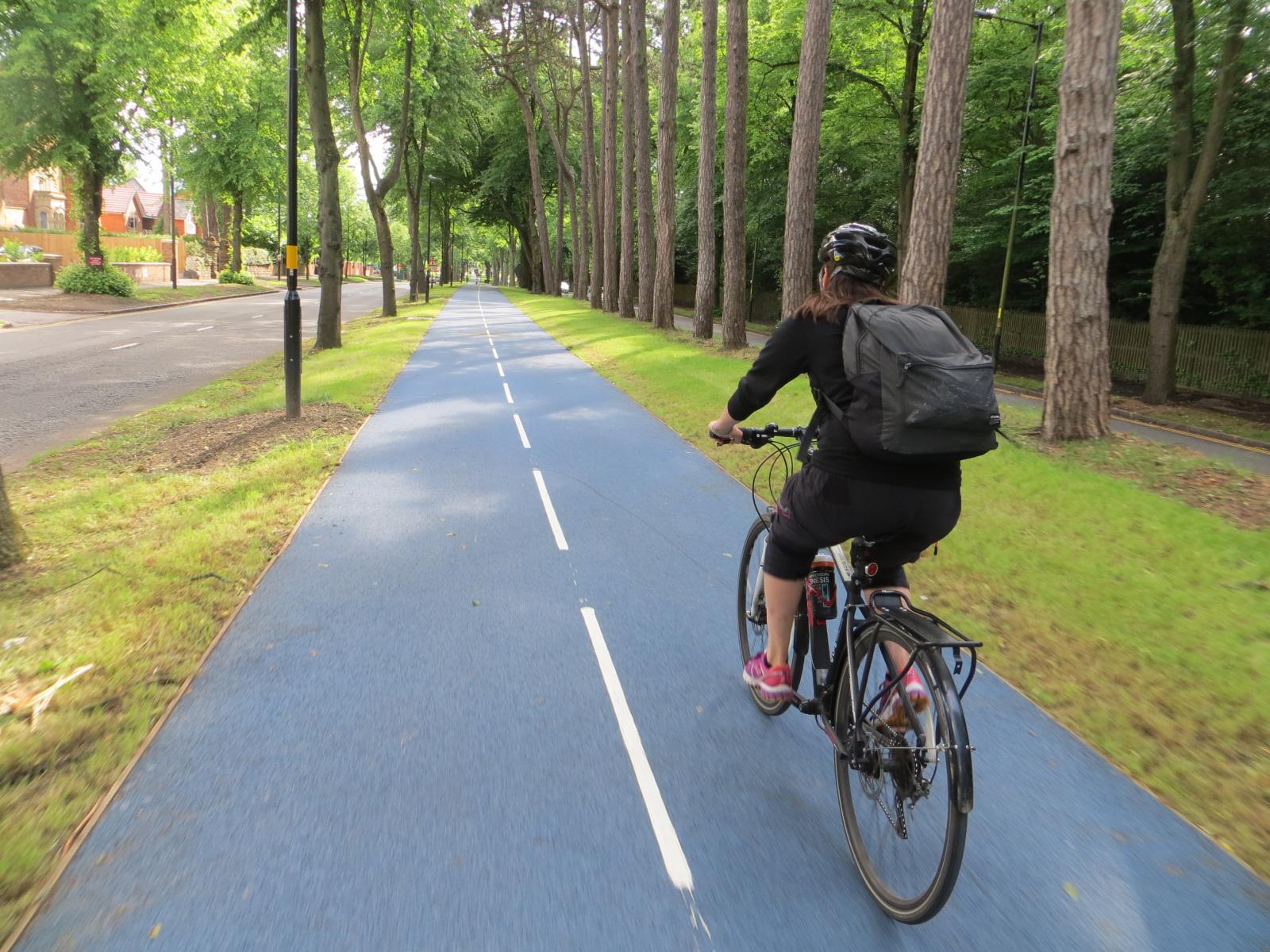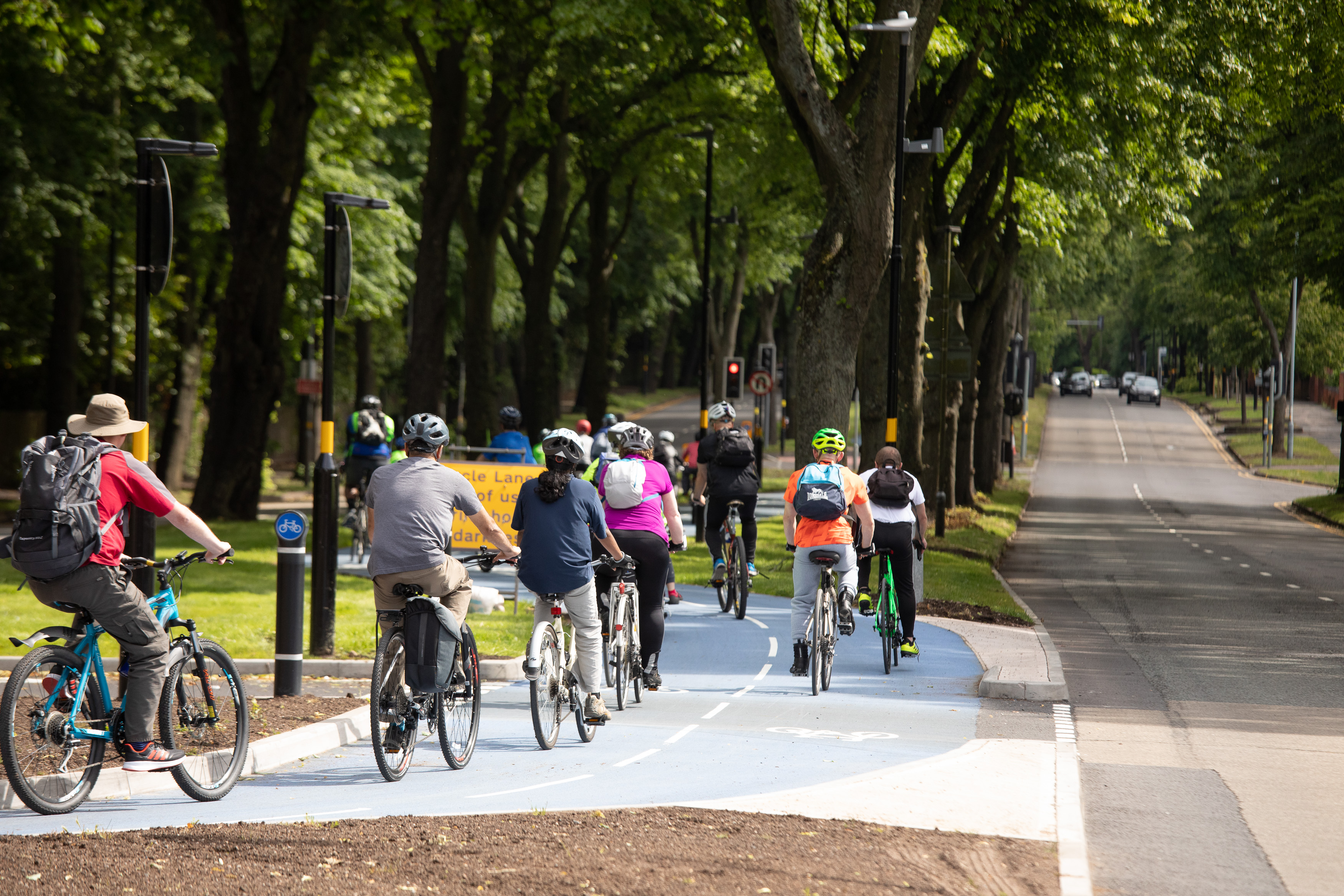A new era for active travel?

Active travel is entering an exciting phase which is seeing investment on a new scale. However, with the upcoming Spending Review, there is also some nervousness around revenue funding streams and ensuring that we can continue the good progress that’s been made. These were two of the topics of discussion at our recent active travel meeting in Birmingham, hosted by our member Transport for West Midlands. At these meetings we like to get out and experience new walking and cycling infrastructure first hand. So, on this occasion, we had a ride along the new A38 route, and back along the canal network. As someone who has ridden many urban cycling routes as part of my role, I have to say that the A38 route was an absolute joy. The road is one of the busiest through the city centre, and not one that I could have imagined cycling along at a leisurely pace before. But the new route allows just that. In particular, the tree lined section down the middle of the road felt safe, relaxing and enjoyable. The scheme is direct, with good journey times into the city centre. We returned to the city centre through the University campus and then down the canal. The canals in Birmingham are a great natural asset, providing direct off-road routes into and out of the city centre. It was encouraging to see the number of people commuting and enjoying leisure activities along this route.  Yet it’s not just in Birmingham where exciting active travel developments are taking shape – they’re happening all across the Urban Transport Group’s network. High profile active Travel Commissioners (or equivalent) have been appointed in London, Greater Manchester, Merseyside, the West Midlands and South Yorkshire, raising the profile of active travel at the local and national level. Transport for Greater Manchester was our first member outside of London to adopt this approach and they have made startling progress since. Its Bee Network - the UK’s largest cycling and walking network championed by former Olympic cyclist and Manchester’s Cycling and Walking Commissioner Chris Boardman - will now cover up to 2,000 miles. A large proportion of the recent Transforming Cities Fund (over half) is being devoted to helping deliver this. This funding statement would have been unimaginable only a couple of years ago. And just this month, Leeds’ new £7.9 million city centre cycle superhighway opened, adding an extra 4km of segregated routes to the city’s growing cycling network thanks to the West Yorkshire Combined Authority’s CityConnect programme, in partnership with Leeds City Council. However, active travel still continues to attract relatively low amounts of funding in comparison to other modes. Last week, the Transport Select Committee published its findings to the Active Travel Inquiry in which they call on Government to play a stronger central role. The Committee identified that the Government will allocate just 1.5% of its total transport spending on active travel and called for a dedicated funding stream for delivering improvements which will increase levels of walking and cycling and increase total funding for active travel. This is something that we fully support. As Ben Still, Managing Director of West Yorkshire Combined Authority and our lead Board member for active travel said, “walking and cycling have a key role to play in the imperative of reducing carbon emissions from transport, as well as offering wider health, social and economic benefits to people and communities. With the right funding deal and leadership from national Government, we can ensure active travel delivers a win-win for people and the planet.”
Yet it’s not just in Birmingham where exciting active travel developments are taking shape – they’re happening all across the Urban Transport Group’s network. High profile active Travel Commissioners (or equivalent) have been appointed in London, Greater Manchester, Merseyside, the West Midlands and South Yorkshire, raising the profile of active travel at the local and national level. Transport for Greater Manchester was our first member outside of London to adopt this approach and they have made startling progress since. Its Bee Network - the UK’s largest cycling and walking network championed by former Olympic cyclist and Manchester’s Cycling and Walking Commissioner Chris Boardman - will now cover up to 2,000 miles. A large proportion of the recent Transforming Cities Fund (over half) is being devoted to helping deliver this. This funding statement would have been unimaginable only a couple of years ago. And just this month, Leeds’ new £7.9 million city centre cycle superhighway opened, adding an extra 4km of segregated routes to the city’s growing cycling network thanks to the West Yorkshire Combined Authority’s CityConnect programme, in partnership with Leeds City Council. However, active travel still continues to attract relatively low amounts of funding in comparison to other modes. Last week, the Transport Select Committee published its findings to the Active Travel Inquiry in which they call on Government to play a stronger central role. The Committee identified that the Government will allocate just 1.5% of its total transport spending on active travel and called for a dedicated funding stream for delivering improvements which will increase levels of walking and cycling and increase total funding for active travel. This is something that we fully support. As Ben Still, Managing Director of West Yorkshire Combined Authority and our lead Board member for active travel said, “walking and cycling have a key role to play in the imperative of reducing carbon emissions from transport, as well as offering wider health, social and economic benefits to people and communities. With the right funding deal and leadership from national Government, we can ensure active travel delivers a win-win for people and the planet.”
Tom Ellerton is a Researcher at the Urban Transport Group

